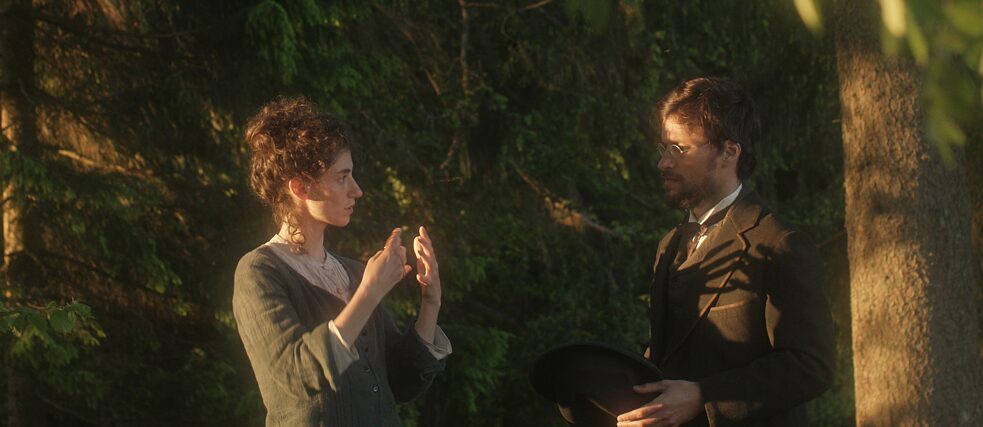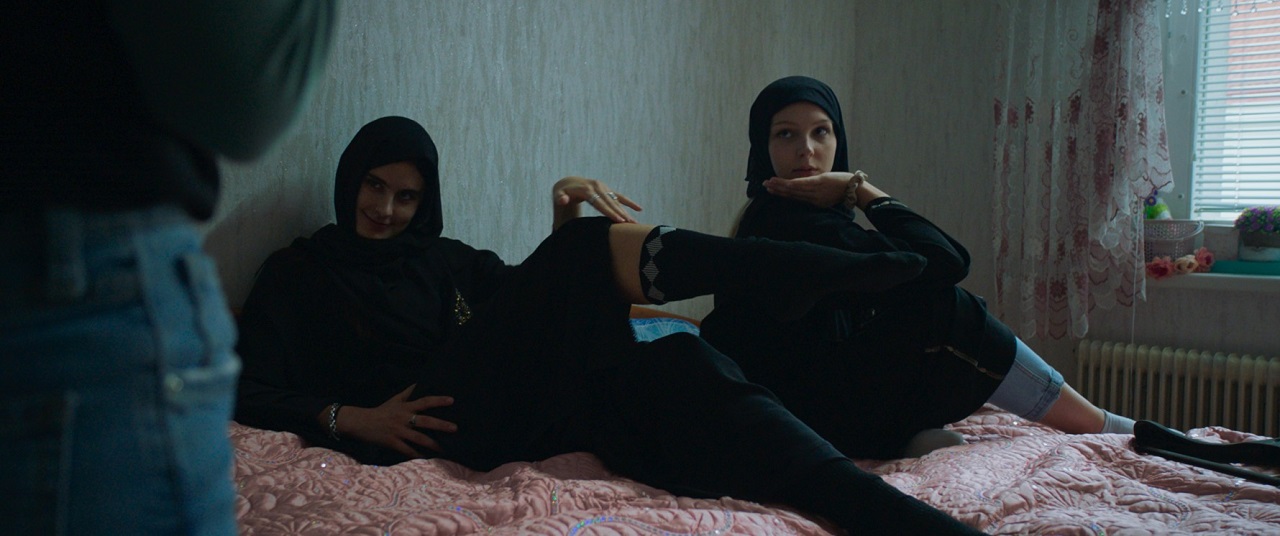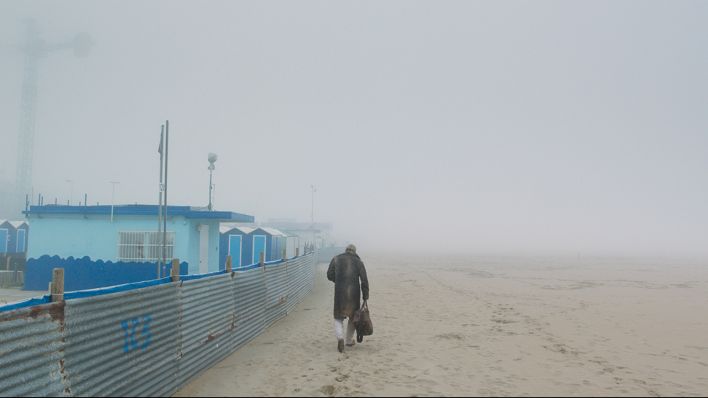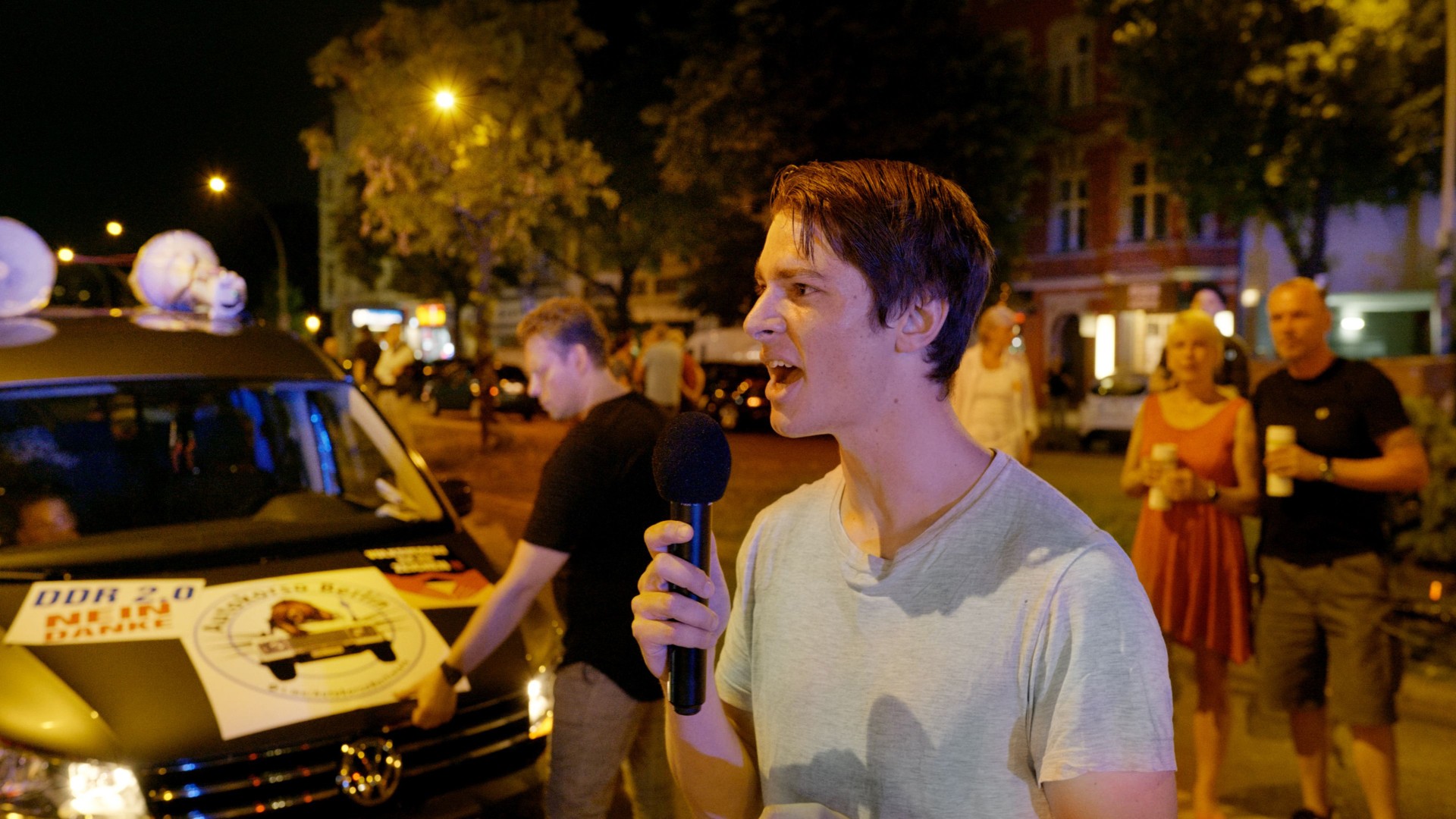Looking at the screen can change your own view permanently: Our favorite films from this year's Berlinale.
Finally cinematic art is back! After the corona-enforced break, quite a few films have emerged with a whole new urgency; rarely has the choice been as hard as it is this year. From anarchistic watchmakers to Kurdish-Austrian teenagers and soothing landscapes: We review a dozen of our favorite films in the current Berlinale 2022 – at least three cinema releases have already been announced.
“Unrest” by Cyril Schäublin
In the 1870s, Russian geographer Pyotr Alexeyevich Kropotkin travelled to Switzerland’s Jura mountains for cartography purposes and returned to Russia some time later as a convinced anarchist. So what happened? Kropotkin had come into intensive contact locally with organized anarchistic watchmakers – encounters that had left a profound impression on him.
In “Unrest”, Cyril Schäublin traces that time and presents the struggle for a future socio-political orientation within the framework of capitalist industrialization. Work breaks are stopped to the second, watches synchronized, times calculated. In impressive macro-shots, Schäublin shows time and again the meticulousness of the watchmakers, particularly in the production of the “Unrueh” of the film’s original German title, which was the oscillating system of mechanical watches. Its constant oscillation between two poles, which makes the watches tick and thus, in a way, makes time possible in the first place, here becomes symbolic of the dialectic of history: the conflict between political polarities in the search for a more reasonable world.


Clara Gostynski, Alexei Evstratov in the movie „Unrueh“ | Photo (Detail) © Seeland Filmproduktion, Image via www.goethe.de
“Sun” by Kurdwin Ayub
It’s a scene like you’ve probably never seen before in a movie theater: Three friends (Yesmin, Bella, and Nati) in their parents’ bedroom, wearing burqas and talking shit, singing, twerking, and filming each other. Spontaneously, a silly music video is created for REM’s “Losing My Religion”. Events come to a head in the feature-film debut by Kurdish-Austrian director Kurdwin Ayub when the video then ends up on YouTube: Yesmin’s mother (whose clothes the girlfriends put on in the video) aims to find blasphemy in the music clip, while the father of the three girls, after the video goes viral in the Kurdish community in particular, proudly drives the three young women from one appearance to the next. While Nati and Bella feel increasingly drawn to the cultural idiosyncrasies of the Muslim-Kurdish community, Yesmin feels a growing desire for separation. With subtlety, intelligence, and thoughtfulness, in “Sun” Ayub tells the story of the minefield that is an adolescence between cultural identities, social-media madness, and individual personality development, including well-meaning paternalism and double standards on all sides.
Cinema release scheduled for September 2022.

Kurdwin Ayub, Sun, 2022 (c) Ulrich Seidl Filmproduktion, Image via fm4.orf.at

“Rabiye Kurnaz vs. George W. Bush” by Andreas Dresen
In 2002, Murat Kurnaz from Bremen was picked up on his trip to Pakistan and shipped without charge to the then new CIA prison of Guantanamo. Andreas Dresen focuses on the experience of Kurnaz’s mother during this time and turns it into a modern David-and-Goliath tale. “Rabiye Kurnaz vs. George W. Bush” is perhaps not the best film Dresen has produced thus far, but it’s a great joy to watch and entirely devoid of political-drama kitsch. The film also skirts the question of whether Murat Kurnaz was actually guilty or not. Dresen’s interest in the so-called “little people”, to whom the filmmaker has always devoted himself with unbounded empathy and not a hint of sentimentality, collides here with very big global politics.
Meltem Kaplan, who works as a comedian, can barely conceal her main profession even in the role of Rabiye Kurnaz. Her occasionally somewhat overzealous performance, however, is still a pleasure to watch thanks to her fantastic presence on screen. Not least, this film is also about an extraordinary rapprochement: that between Rabiye Kurnaz and her lawyer Bernhard Docke (a role in which actor Alex Scheer disappears completely). Their lives could hardly be further apart, but in their greatest helplessness the two sides of German reality unexpectedly meet and form something like a friendship.
Cinema release scheduled for April 16.

“A Love Song” by Max Walker-Silverman
On a remote campsite by a large lake somewhere in the northwest of the USA, a lonely caravan sits in slot number seven. It is here that Faye is spending her well-deserved retirement – or so one might think. Her days consist of fishing, eating, listening to the radio, and stargazing. And waiting. Because in fact, Faye has a date with her childhood sweetheart Lito, whom she hasn’t seen for decades and with whom she shares a sad fate: both have been widowed for several years. What could all too easily have been a shallow indie comedy becomes a sensitive contemplation of love and grief in the hands of the director and screenwriter Max Walker-Silverman. It’s also worth mentioning here that it is the women, throughout, who take matters into their own hands (emotionally, technically, creatively). Full of empathy, the camera explores the faces of the taciturn protagonists in quiet shots that speak of melancholy, affection, and loneliness. Meanwhile, the majestic landscape, for which Walker-Silverman likewise leaves ample scope, becomes a patient witness and perhaps the sole comfort for these figures who have somehow fallen out of time.

“Rewind & Play (‘It’s not nice?’)” by Alain Gomis
The video tape fast-forwards. Back. Play it again. Who can we see? The American Thelonious Monk (1917–1982), one of the world’s greatest jazz musicians and one of its first hipsters: eccentric, congenial as a composer, monosyllabic as a guest in interviews, which he was decidedly reluctant to give. And yet he patiently answered questions on French television in December 1969. The tapes of those recordings have surfaced only now. “Rewind & Play” collages an experimental documentary from the archive material, in which we nevertheless see the same scenario over and over. Together with the camera, the eyes of the audience wander in close-up shots across the sweaty face of the musician, over his curly beard, lips, nose, and eyes.
Watch as he is asked to answer the same question from the moderator over and over again, because yet another take wasn’t satisfactory. Bear witness to the way the film crew bluntly states it will cut out Monk’s critical objection that he was paid less for his appearance than his French musician colleague. But what view are we actually following here? Why the bizarre interest of the camera in the protagonist’s skin, which seems almost like a physiognomic study? Why is there no one to wipe the beads of sweat from the TV guest’s forehead, to adjust the spotlight? Suspicions stir without ever being confirmed or verified. Would a white musical star be treated the same way? A vexing work that draws its power solely from the montage of curated archive footage.

Alain Gomis, Rewind & Play (‘It’s not nice?’), 2022 (c) Andolfi Sphere Films, Image via www.cineuropa.org

“The United States of America” by James Benning) / “Journal d’Amérique” by Arnaud des Pallières
In the Forum section this year, the Berlinale presented “The United States of America” and thus a new work by avantgarde filmmaker James Benning. Benning had already released a film of the same title back in 1975, which is now considered a key work of structuralist film. While back then it was landscape shots – filmed from a moving car – that were interwoven, the new film is dominated by static shots. The artist dedicates a two-minute still to each American state: railroad underpasses, lonely highways, industrial plants, and diverse landscapes ranging from deserts to mountain forests. A small but significant twist at the end puts the uniqueness of the images themselves into focus (and recalls John Skoog, who formed part of a Double Feature in 2017). The ability of the USA to inspire fantasies and conjure up legends is also the subject of Arnaud des Pallières’ film essay “Journal d’Amérique”, which was also screened as part of the Forum program. A cinematic examination of the myths and stories of the United States, of promises kept and broken.

“Rimini” by Ulrich Seidl
All alone, a beefy, quirky-looking man in a heavy coat walks along desolate, rainy streets until he finally reaches his destination: a nondescript suburban family house, where his brother is already waiting for him. Their mother has died and her sons are taking care of the final formalities. The following day, the man heads back to his adopted home of Rimini. He is the washed-up pop star Richie Bravo, who has taken up residence here, and Ulrich Seidl shows the meager remains of his existence, in which every day is like the next – filled to bursting point with grand delusions, alcohol addition, and financial worries. Even with his nightly concerts to groups of pensioners, which are supposed to evoke happy, long-gone days, the singer can barely keep his head above water and so turns to ever more drastic measures of self-preservation, from prostitution to blackmail.
With Richie Bravo, Seidl unsparingly, but never unempathetically, pursues to the bitter end a somber swan song to the generation of children of post-war, economic-miracle affluence, together with their carefree, unworldly insouciance. The Italian seaside resort likewise appears merciless, bleak, and abstracted – just like the story that never quite wants to come together from many fragments and threatens to dissolve, along with its protagonist, into almost total meaninglessness and insignificance.
Cinema release scheduled for May 19.


Ulrich Seidl, Rimini, 2022 (c) Ulrich Seidl Filmproduktion
“Camuflaje” by Jonathan Perel
In the beginning, there is only running. For several minutes, the camera focuses on the bare feet of a runner on an uneven road. Is someone running from something here or towards something? The feet belong to the Argentinian writer Félix Bruzzone, whose works continually examine the period of the military dictatorship in Argentina, when the regime waged a “dirty war” against its own population in which countless people – including Bruzzone’s mother – were abducted, tortured, and murdered.
In “Camuflaje” the focus is the Campo de Mayo military base, whose function as an internment camp only became known once the regime had ended. Bruzzone grew up close by with his grandmother, and it was there that his own mother was imprisoned and probably murdered. Jonathan Perel consistently ignores the classic documentary-film narrative – the writer’s family history, for example, appears only in passing in his conversations with others. The terror is clearly still so present to them all that it cannot even be named specifically. Or can it? “Camuflaje” attempts to trace the efforts of the military dictatorship towards the concealment implied in its title by means of a sociocultural cartography of the non-place that is Campo de Mayo. In the end, the writer runs again: this time, away from this place of horror.

“A German Party” by Simon Brückner
This documentary is about one thing, as is felt in every other shot: how to ultimately achieve the outward effect you strive for. In this hour and a half, PR and marketing are discussed with far more passion than political substance. It’s surprising how open-heartedly the “Alternative für Deutschland” allows documentary filmmaker Simon Brückner insight into its day-to-day operations, whereby Brückner’s shots remain entirely free of comment, without once even displaying the names of those appearing. Unspectacular party meetings alternate with visits to the old founding father of Croatian nationalists, who explains to the mild-mannered young member that modern right-wingers should no longer rely on “Hollywood Nazis”.
Even if some of the participants may have held back in front of the camera here, “A German Party” offers interesting insights into a purgatory of vanities in which workers and academics confront each other with just as little understanding as East and West, local and federal politics, self-declared national Bolshevists, right-wingers and neo-libertarians. Holding it all together, it seems – albeit with some personal exceptions – is, not least, anti-Western resentment. This contempt for the promise of equality, which historically unites bourgeois society, then stands in solid opposition to the external perception the party strives for. And it is precisely in this respect that it has illuminating parallels with current discourses even beyond the political right.


Simon Brückner, A German Party, 2021 © Spicefilm, Image via www.berlinale.de
“Baqyt (Happiness)” by Askar Uzabayev
When an employee of the Kazakh embassy appears in the audience at the premiere and feels compelled to relativize every political dimension of the brutal violence against women depicted in the film, then you know a nerve has been struck. After all, this kind of violence has thus far barely been prosecuted in Kazakhstan, as “Baqyt” screenwriter Assem Zhapisheva reports. And it is precisely that same assertion that everyone is the architect of their own fortune that is also, appropriately enough, the subject of this film. Together with the director Askar Uzabayev, Zhapisheva creates a picture of a misogynistic society in which, consequentially, women don’t even treat one another very well.
It can be difficult to watch at times: The father of a family is sentimental because his beloved daughter is getting married. Shortly afterwards, he beats his wife black and blue. When she wants to escape, the violence escalates utterly. “Baqyt” recounts all this with nuance – even the tormented protagonist is a credible participant and by no means someone easily sympathized with. This drama, in which the happiness of the title flashes merely as a faint promise of self-optimization across the gray sky, also boasts a magnificent cast.


“Ta farda (Until Tomorrow)” by Ali Asgari
Two people wander through the cold city, desperately seeking refuge for themselves and a baby. One might almost consider “Ta farda” a modern Christmas story – albeit without a happy ending and with two female friends instead of a mother and father: Single parent Fereshteh urgently needs to find care for her young daughter, but only until the next day because her parents have announced a visit. They must not know anything about the child. In Iran, personal lives are inevitably political, and so neighbors, hospital staff, and the doorwoman of the student residence of Fereshteh’s best friend Atefeh all quickly become suspicious of the young woman without a husband. Consequently, both protagonists can only help themselves in this odyssey, which is reminiscent of films like Jafar Panahi’s “Ayneh” in its laconism. According to its director Asgari, “Ta farda” is an atmospheric picture of present-day Iran, in which young women in particular no longer want to give any thought to the rigid religious guardians of morality – and at the same time have little hope of escaping the country’s leaden heaviness anytime soon.

“A Little Love Package” by Gastón Solnicki
At the end of this film, you’ll still be unsure of just what kind of a film you have actually watched. It is certainly not a “classic comedy”, as the Berlinale program booklet concludes. The premise is as simple as it is conceivable: Greek teacher Angeliki is looking for a suitable apartment in Vienna with the help of interior designer Carmen, but fails to find one. “A Little Love Package” is first and foremost beautiful cinematography and skilled editing. It is also a condensed version of the present, crafted from episodes strung together, divided into loose chapters and sequences that seem impenetrably concrete and urgently necessary at the moment they unfold.
While there may be no classic plot, something like the spirit of world history seems to permeate the images and briefly capture them by means of the visual power of cinema. From atomized expats to changing times, and from Viennese smokers’ bars to the most existential of matters: life and death, everything and nothing. At the end, we hear Friedrich Rückert’s poem “Ich bin der Welt abhanden gekommen” set to music by Gustav Mahler. And even as a viewer, after watching “A Little Love Package” you need a moment to get back to reality.

On the power of cinema. Three more recommendations.
Watching the screen can permanently alter your own perspective. This idea is encapsulated at this Berlinale, not least, by the documentary “Come With Me to the Cinema – The Gregors”, which is representative of hundreds of other films. Erika and Ulrich Gregor are stalwarts of German cinema, having brought filmmakers from all over the world to the Berlin “Arsenal” and the film festival and promoted creative and experimental formats without regard for the current ideological zeitgeist. For two and a half hours, Alice Agneskirchner lets the couple tell their own story. Afterwards, you’re left with a desire simply to discover other films – for example Cem Kaya’s “Aşk, Mark ve Ölüm (Love, D-Mark and Death)” about an entire subculture of Turkish “Gastarbeiter” music in Germany, which has developed almost unnoticed by the majority culture since the 1960s. Or “West Indies ou les nègres marrons de la Liberté” by the Mauritanian filmmaker Med Hondo from 1979, shot on a single wooden ship that becomes the stage for a grotesque portrayal of French colonial history. (This landmark of African cinema is part of the Med Hondo Collection at the Harvard Film Archive).









